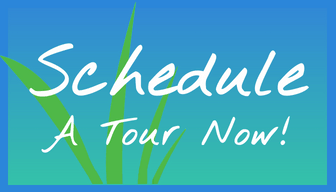 “All we are is the result of what we have thought.” … Shakyamuni Buddha In last month’s post I defined Thai foot reflexology and its benefits, and explained the differences between it and the form of reflexology commonly taught in North America. In this month’s article I would like to share how Thai reflexology has influenced my own life and how Buddhism has informed Thailand’s practice of medicine, including reflexology. Credit for founding the formal structure of Thai medicine rests with one man: Jivaka Kumarabhacca. Kumarabhacca was a legendary Ayurvedic doctor known to possess great healing gifts. In addition to administering to both royalty and commoner, he was the personal physician to Lord Buddha. Buddhism in Thailand During its period of advancement in India between 500 BCE and 800 CE many Hindus were drawn to the teachings of the Buddha, were ordained as monks and practiced Ayurvedic medicine as a way of expressing compassion in their lives. (Ayurvedic medicine developed in India between the mid-second millennium BCE to 500 CE and is the oldest model of medicine in the world.) Ashoka, the great 2nd century emperor of India, converted to Buddhism and sent monks out into the world with the responsibility of reaching more and more people with the teachings of the Buddha and Ayurvedic medicine. It is here that the relationship between Buddhism and health are birthed. By the time the monks entered northern Thailand, influences from China, Japan, Taiwan and Korea were evident in a new style of medicine. (The Taiwanese, for example, added in the use of the wooden stick in the foot sessions.) The Thais embraced both Buddhism and the ideas on health and disease introduced by the monks. Buddhism became the official religion of Thailand with over 95% of the population observing. Overtime the country married these new ideas with its own and created a vibrant style of healing art that has survived for thousands of years, and even the arrival of western medicine in the country. The Genesis of Buddhism Just as traditional Thai medicine credits its beginning with one man, so does Buddhism. Siddhartha Gautama, an Indian born to great wealth, literally walked away from a life of luxury at the age of 29. In his later years, people would ask him “Are you a god? An angel? A saint?” His reply to all these questions was, “No.” “Then what are you?” His response, “I am awake” became his title, for the word Buddha means, “awake.” Thus, Buddhism began with a man who roused himself from the illusion of the waking human state. Siddhartha was the son of a regional king born around 563 BCE in what is now known as Nepal. When his son was born, the king summoned astrologers to discern his son’s future. The charts foretold the possibility of two paths in the infant’s life. Should he follow his father’s footsteps, the stars indicated that Siddhartha would unify all of India and conquer the world. Should he renounce the world though, he would live to redeem the world. The King, wanting the former, spared no effort to keep his son on track – his track. All manner of privilege was placed at young Siddhartha’s disposal: palaces, dancing girls, rich food and drink, private tutoring in advanced military tactics and intellectual discourse. None but the philosophical pursuits interested the young prince. Orders were issued that nothing unpleasant be allowed into the prince’s courtly life. When he left the palace, servants ran ahead to clear the roads of the old, the diseased and the dead. One day though, Siddhartha escaped his protectorate and set out on the streets on his own. For the first time in his life, this young man witnessed aging, disease and death. He also met a monk, from whom he learned about the path of renunciation. These encounters had a life-changing effect on the young prince. Siddhartha immediately recognized the source of his own dissatisfaction; the futility of finding fulfillment on the physical plane. Late one night, he kissed his sleeping wife and son goodbye and set out to fulfill his destiny. Reaching the forest edge, he discarded his royal attire, shaved his head and entered the world of asceticism. In every austerity he outdid his teachers and fellow ascetics and eventually grew so weak that he nearly died. This experience taught him the futility of extremes – whether asceticism or privilege – and constructed the first plank of his program: the principle of the Middle Way, a path of centered moderation that holds the promise of liberation from all suffering. Buddhism is a religion and philosophy with high moral values that lays great emphasis on human thought and action in dealing with the natural environment, society and personal challenges. It is concerned with the relationship between thoughts and behavior, and the relationship between behavior and its consequences. Interestingly, this spiritual tenant relates nicely to the modern recommendation of moderation and responsibility of which we hear so much today. Buddhism and Thai Medicine The Middle Way establishes the underlying principle of traditional Thai medicine, of which there are four branches. To conclude your understanding of the relationship between Buddhism and Thai reflexology, and to read about their impact on my life, please visit this link.
“All we are is the result of what we have thought.” … Shakyamuni Buddha In last month’s post I defined Thai foot reflexology and its benefits, and explained the differences between it and the form of reflexology commonly taught in North America. In this month’s article I would like to share how Thai reflexology has influenced my own life and how Buddhism has informed Thailand’s practice of medicine, including reflexology. Credit for founding the formal structure of Thai medicine rests with one man: Jivaka Kumarabhacca. Kumarabhacca was a legendary Ayurvedic doctor known to possess great healing gifts. In addition to administering to both royalty and commoner, he was the personal physician to Lord Buddha. Buddhism in Thailand During its period of advancement in India between 500 BCE and 800 CE many Hindus were drawn to the teachings of the Buddha, were ordained as monks and practiced Ayurvedic medicine as a way of expressing compassion in their lives. (Ayurvedic medicine developed in India between the mid-second millennium BCE to 500 CE and is the oldest model of medicine in the world.) Ashoka, the great 2nd century emperor of India, converted to Buddhism and sent monks out into the world with the responsibility of reaching more and more people with the teachings of the Buddha and Ayurvedic medicine. It is here that the relationship between Buddhism and health are birthed. By the time the monks entered northern Thailand, influences from China, Japan, Taiwan and Korea were evident in a new style of medicine. (The Taiwanese, for example, added in the use of the wooden stick in the foot sessions.) The Thais embraced both Buddhism and the ideas on health and disease introduced by the monks. Buddhism became the official religion of Thailand with over 95% of the population observing. Overtime the country married these new ideas with its own and created a vibrant style of healing art that has survived for thousands of years, and even the arrival of western medicine in the country. The Genesis of Buddhism Just as traditional Thai medicine credits its beginning with one man, so does Buddhism. Siddhartha Gautama, an Indian born to great wealth, literally walked away from a life of luxury at the age of 29. In his later years, people would ask him “Are you a god? An angel? A saint?” His reply to all these questions was, “No.” “Then what are you?” His response, “I am awake” became his title, for the word Buddha means, “awake.” Thus, Buddhism began with a man who roused himself from the illusion of the waking human state. Siddhartha was the son of a regional king born around 563 BCE in what is now known as Nepal. When his son was born, the king summoned astrologers to discern his son’s future. The charts foretold the possibility of two paths in the infant’s life. Should he follow his father’s footsteps, the stars indicated that Siddhartha would unify all of India and conquer the world. Should he renounce the world though, he would live to redeem the world. The King, wanting the former, spared no effort to keep his son on track – his track. All manner of privilege was placed at young Siddhartha’s disposal: palaces, dancing girls, rich food and drink, private tutoring in advanced military tactics and intellectual discourse. None but the philosophical pursuits interested the young prince. Orders were issued that nothing unpleasant be allowed into the prince’s courtly life. When he left the palace, servants ran ahead to clear the roads of the old, the diseased and the dead. One day though, Siddhartha escaped his protectorate and set out on the streets on his own. For the first time in his life, this young man witnessed aging, disease and death. He also met a monk, from whom he learned about the path of renunciation. These encounters had a life-changing effect on the young prince. Siddhartha immediately recognized the source of his own dissatisfaction; the futility of finding fulfillment on the physical plane. Late one night, he kissed his sleeping wife and son goodbye and set out to fulfill his destiny. Reaching the forest edge, he discarded his royal attire, shaved his head and entered the world of asceticism. In every austerity he outdid his teachers and fellow ascetics and eventually grew so weak that he nearly died. This experience taught him the futility of extremes – whether asceticism or privilege – and constructed the first plank of his program: the principle of the Middle Way, a path of centered moderation that holds the promise of liberation from all suffering. Buddhism is a religion and philosophy with high moral values that lays great emphasis on human thought and action in dealing with the natural environment, society and personal challenges. It is concerned with the relationship between thoughts and behavior, and the relationship between behavior and its consequences. Interestingly, this spiritual tenant relates nicely to the modern recommendation of moderation and responsibility of which we hear so much today. Buddhism and Thai Medicine The Middle Way establishes the underlying principle of traditional Thai medicine, of which there are four branches. To conclude your understanding of the relationship between Buddhism and Thai reflexology, and to read about their impact on my life, please visit this link.



